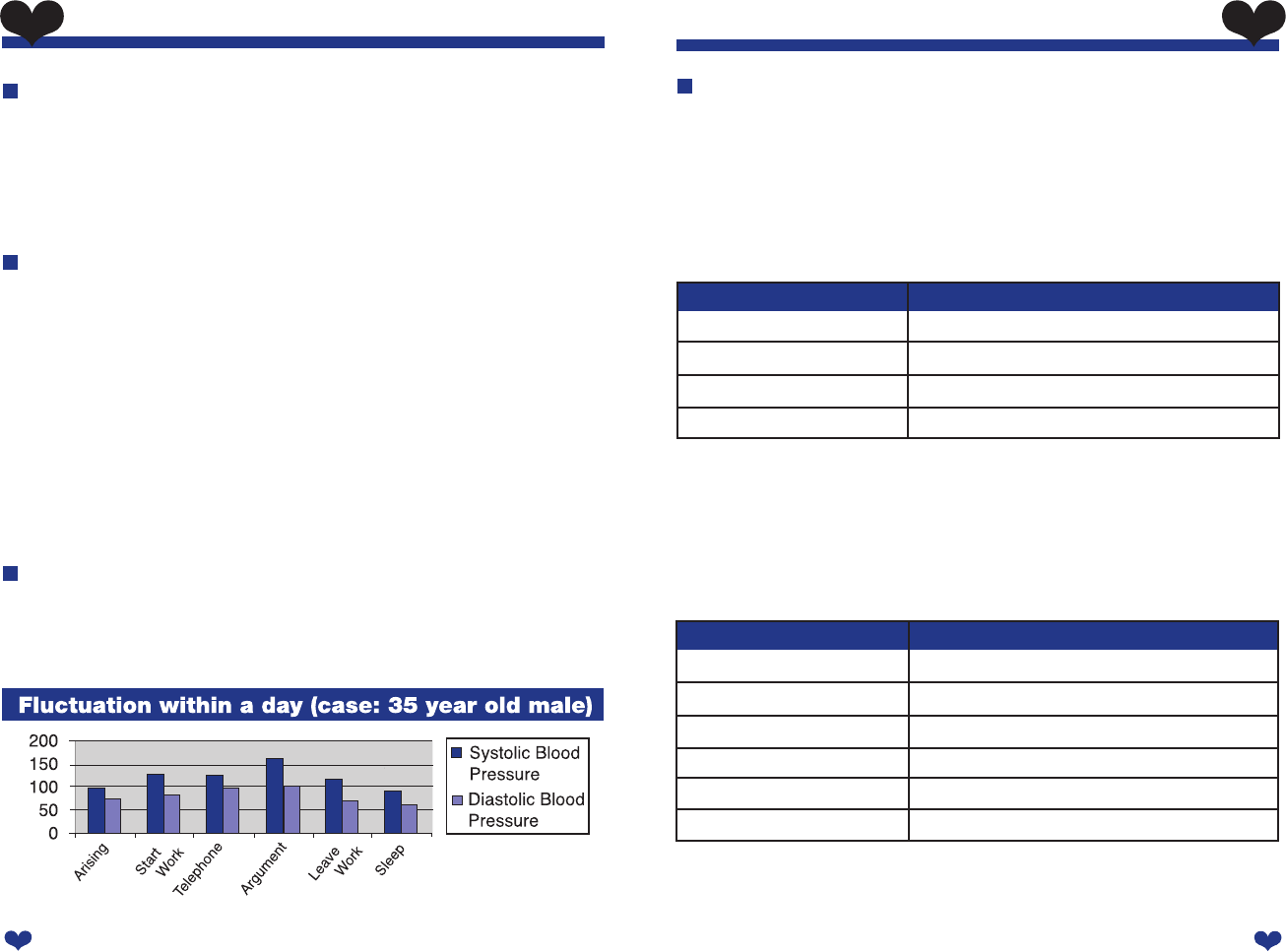
LifeSource Health Line (Toll-Free): 1-888-726-9966
E-12
What Is Blood Pressure?
Blood pressure is the force exerted by blood against the walls of the arteries.
Systolic pressure occurs when the heart contracts; diastolic pressure occurs
when the heart expands. Blood pressure is measured in millimeters of mercury
(mmHg).
What Affects Blood Pressure?
Blood pressure is affected by many factors: age, weight, time of day, activ-
ity level, climate, altitude and season. Certain activities can significantly
alter one’s blood pressure. Walking can raise systolic pressure by 12 mmHg
and diastolic pressure by 5.5 mmHg. Sleeping can decrease systolic blood
pressure by as much as 10 mmHg. Taking your blood pressure repeatedly
without waiting an interval of 5 minutes between readings, or without raising
your arm to allow blood to flow back to the heart, can also affect it.
In addition to these factors, beverages containing caffeine or alcohol, certain
medications, emotional stress and even tight-fitting clothes can make a differ-
ence in the readings.
What Causes Variations In Blood Pressure?
An individual’s blood pressure varies greatly from day to day and season to
season. For hypersensitive individuals, these variations are even more pro-
nounced. Normally, blood pressure rises during work or play and falls to its
lowest levels during sleep.
In Canada - Auto Control Medical (Toll-Free): 1-800-461-0991
E-13
ABOUT BLOOD PRESSURE
ABOUT BLOOD PRESSURE
Assessing High Blood Pressure for Adults
The following standards for assessing high blood pressure (without regard
to age or gender) have been established as a guideline. Please note that other
risk factors (e.g. diabetes, obesity, smoking, etc.) need to be taken into con-
sideration and may affect these figures. Consult with your physician for an
accurate assessment.
JNC7 Classification Table – for adults within the U.S.
BP Classification Systolic (mmHg) Diastolic (mmHg)
Normal less than 120 and less than 80
Prehypertension 120-139 or 80-89
Stage 1 Hypertension 140-159 or 90-99
Stage 2 Hypertension 160 or 100
SOURCE: The Seventh Report of the Joint National Committee on
Prevention, Evaluation and Treatment of High Blood Pressure for Adults.
National Heart, Lung and Blood Institute - May 2003.
WHO Classification Table – for adults outside of the U.S.
(e.g. Canada, Mexico)
BP Classification Systolic (mmHg) Diastolic (mmHg)
Optimal less than 120 and less than 80
Normal less than 130 or less than 85
High-Normal 130-139 or 85-89
Stage 1 Hypertension 140-159 or 90-99
Stage 2 Hypertension 160-179 or 100-109
Stage 3 Hypertension 180 or
110
SOURCE: Standards to assess high blood pressure, without regard to age
or gender, have been established by the World Health Organization (WHO).
greater than
or equal to
greater than
or equal to
greater than
or equal to
greater than
or equal to















